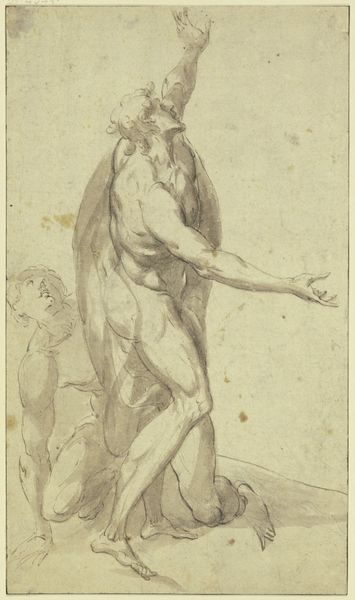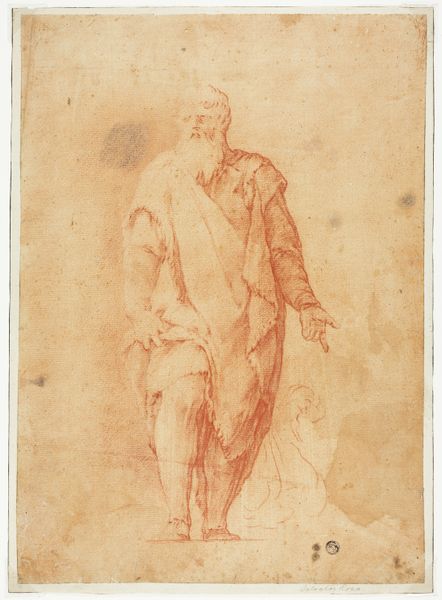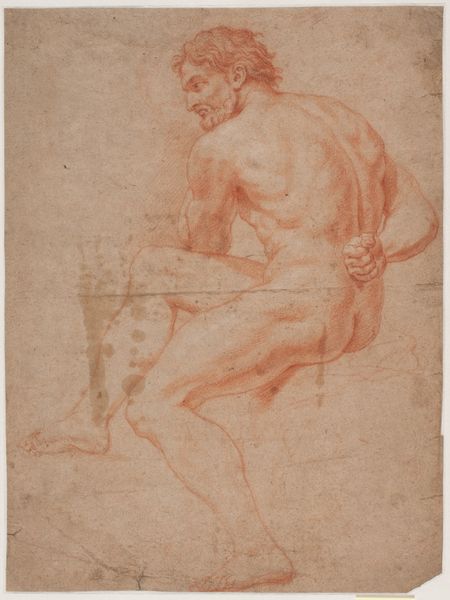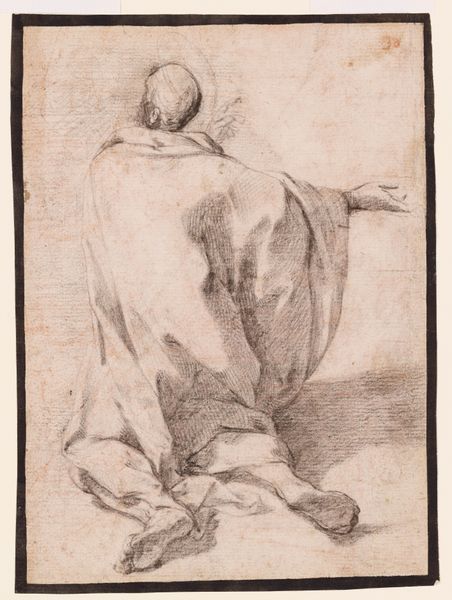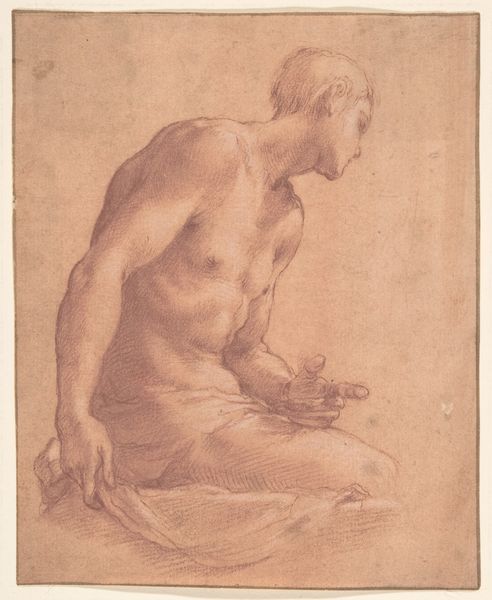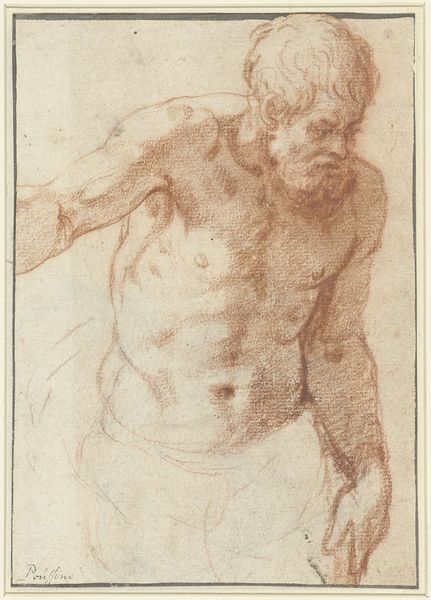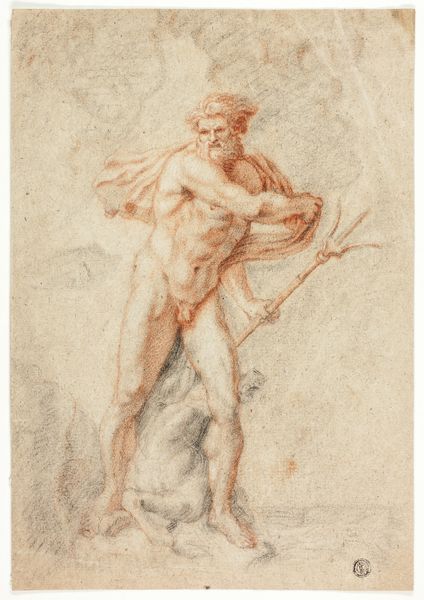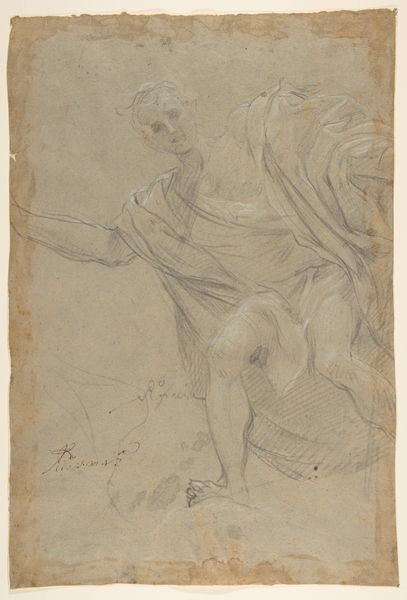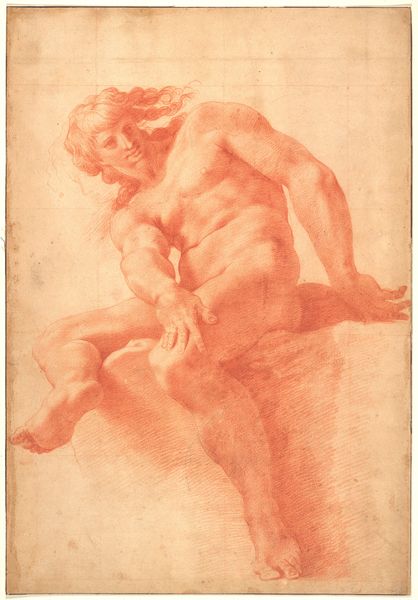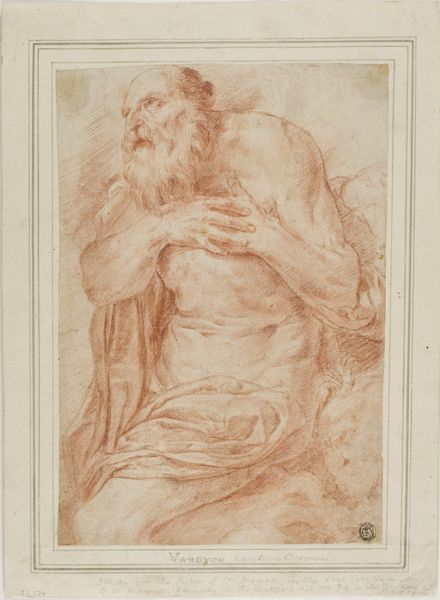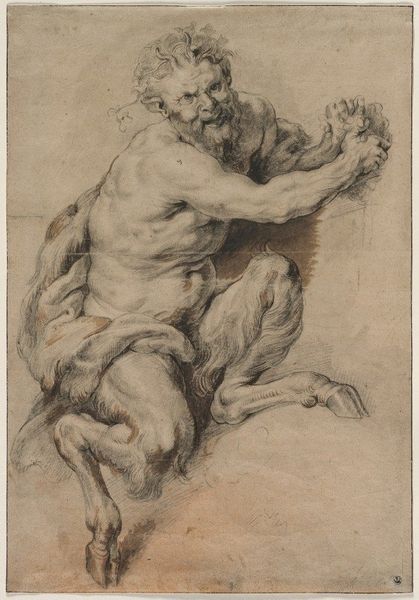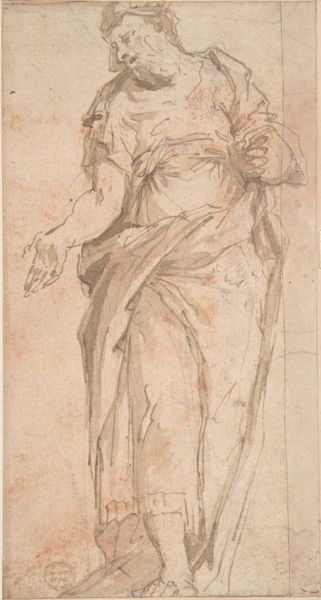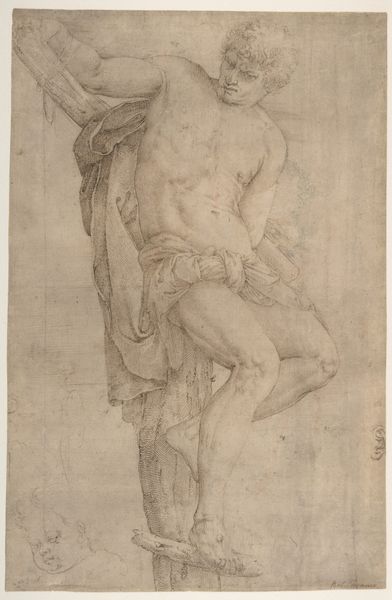
Kneeling Bearded Old Man (recto); Section of a Draped Limb and Sketches (verso) 1500 - 1571
0:00
0:00
drawing, pen
#
portrait
#
drawing
#
figuration
#
11_renaissance
#
pen
#
history-painting
#
italian-renaissance
Dimensions: 9 x 6 15/16in. (22.8 x 17.6cm)
Copyright: Public Domain
Curator: Let's spend some time with "Kneeling Bearded Old Man," a drawing in pen and red chalk attributed to Nosadella, dating to the Italian Renaissance between 1500 and 1571. It’s currently held in the collection of the Metropolitan Museum of Art. Editor: The immediate impression is one of raw emotion. The figure's pose, the upward gaze, there’s an intense feeling of despair or supplication. You feel it in your gut. Curator: I agree. The artist’s process really emphasizes the physicality of that emotion. Look at the rapid strokes of the pen, the build-up of lines to define form. Nosadella is less concerned with precise anatomical accuracy and more focused on conveying the internal state of his subject through gesture and line quality. What raw material was used and the purpose of the study within the cultural norms should also be understood in conjunction with this being a drawing. Editor: And consider the potential narrative context. An old man kneeling—is it prayer? Is it surrender? This piece invites speculation. What power dynamics are at play in that implied relationship between the kneeling figure and whoever—or whatever—he's beseeching? It is easy to speculate from that pose on what is not explicitly shown to us. Curator: The use of red chalk, in particular, adds to this. Red chalk allows for a certain warmth, a certain fleshiness, and a quicker workflow for the artist. Nosadella's manipulation of that material shows this was potentially created as part of an exploration for larger work or potentially even an apprentice's way of understanding the art from the master who produced this work. Editor: Thinking about its place within Italian Renaissance art, we often see these portrayals of powerful male figures. Even in despair, there’s this display of physical strength, an understanding of body and form and that’s reflective of societal standards when portraying individuals. The man's implied subjugation creates an interesting tension in this work. Curator: I’m glad you picked up on that tension. For me, this work serves as a fascinating reminder that even preliminary sketches can possess a potent emotional depth. We often perceive “finished” paintings or sculptures as the ultimate goals of artists, but these more spontaneous and experimental exercises offer valuable insights into the creative processes. Editor: Yes, precisely! Examining that dialogue between the artist's intention, material constraints, and social context gives rise to some of the most profound reflections, ones we can extend even to contemporary modes of art making and meaning.
Comments
No comments
Be the first to comment and join the conversation on the ultimate creative platform.
